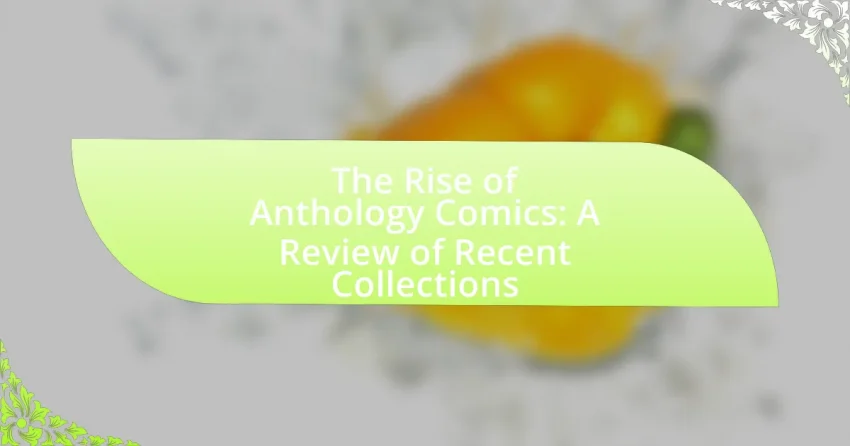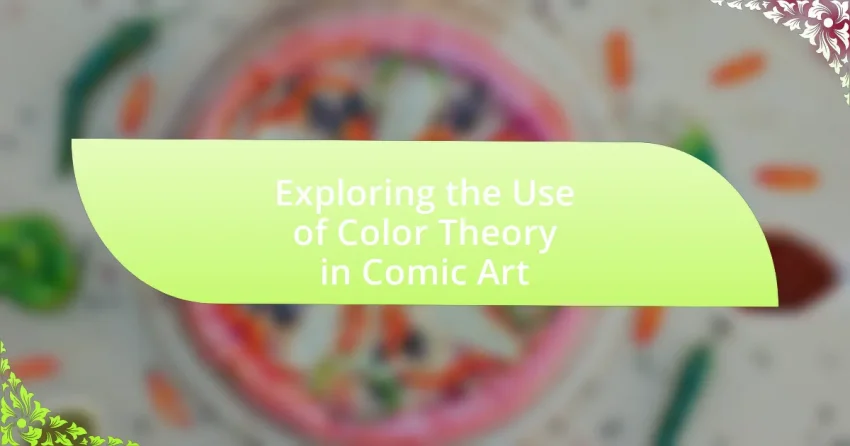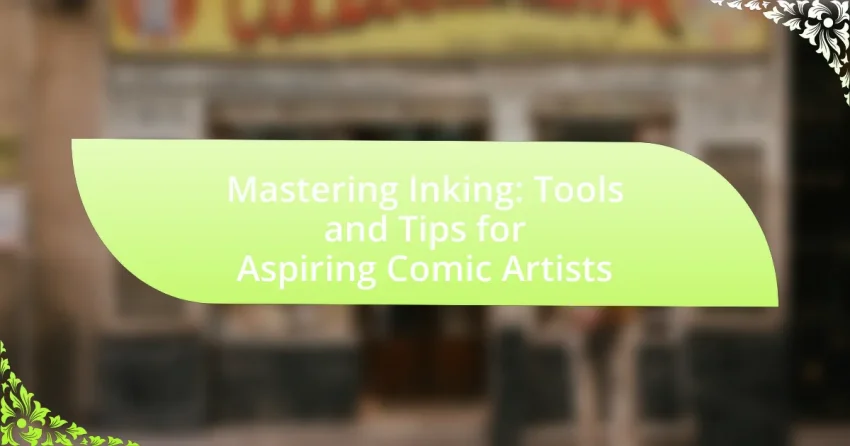The article focuses on the intricate process of adapting comics into screenplays, highlighting the essential steps involved, such as analyzing source material, developing screenplay structure, and translating visual storytelling into cinematic narratives. It discusses the challenges screenwriters face, including maintaining character depth and managing fan expectations, while also emphasizing the importance of collaboration with original…
The Rise of Anthology Comics: A Review of Recent Collections
Anthology comics are collections of short stories or comic strips that feature various creators and artistic styles within a single volume. Their popularity is rising due to the demand for diverse storytelling and the accessibility provided by digital platforms. This article reviews notable recent collections, explores how anthology comics differ from traditional formats, and highlights…
Exploring the Use of Color Theory in Comic Art
Color theory in comic art encompasses the principles and guidelines that govern the use of color to create visual harmony, convey emotions, and enhance storytelling. The article explores how color influences visual storytelling by guiding emotional responses, establishing mood, and affecting pacing. It discusses fundamental principles such as the color wheel, color harmony, and contrast,…
The Importance of Thumbnail Sketches in Comic Design
Thumbnail sketches are essential preliminary drawings in comic design that allow artists to explore layouts, composition, and pacing before finalizing detailed artwork. These small, rough sketches serve as visual blueprints, enhancing creativity and problem-solving by enabling quick iterations of ideas. The article discusses the characteristics of effective thumbnail sketches, their role in the comic creation…
Behind the Panels: A Conversation with a Comic Writer on World-Building
The article “Behind the Panels: A Conversation with a Comic Writer on World-Building” explores the essential role of world-building in comics, detailing how it creates immersive fictional universes that enhance storytelling and character development. It examines the importance of establishing coherent settings, cultural depth, and consistent rules, which contribute to a believable narrative. The article…
Mastering Inking: Tools and Tips for Aspiring Comic Artists
The article “Mastering Inking: Tools and Tips for Aspiring Comic Artists” focuses on the essential process of inking in comic art, which involves applying ink to pencil drawings to enhance visual clarity and depth. It outlines the differences between inking and other comic art techniques, emphasizing its significance in storytelling and character development. Key topics…
A Comparative Review of Classic vs. Modern Comic Magazine Formats
The article provides a comparative review of classic and modern comic magazine formats, highlighting key differences in size, paper quality, storytelling techniques, and artistic styles. It traces the evolution of comic magazines from their early 20th-century origins to contemporary digital formats, emphasizing how cultural influences and technological advancements have shaped these changes. The discussion includes…
The Best Comic Magazine Series for Young Readers
The article focuses on the best comic magazine series for young readers, highlighting popular titles such as “Dog Man,” “Amulet,” and “The Adventures of Tintin.” It defines the criteria for determining the ‘best’ series, emphasizing age-appropriateness, engaging storytelling, and positive themes. The article also discusses the benefits of comic magazines in enhancing literacy and creativity,…
How to Develop a Unique Art Style for Your Comic Series
Developing a unique art style for a comic series is essential for creating a distinctive visual identity that differentiates the work from others in the genre. This article outlines the significance of a unique art style in enhancing storytelling, audience engagement, and brand identity. Key elements contributing to a unique style include individual creativity, technique,…
Understanding Panel Composition for Effective Comic Layouts
Panel composition in comic layouts is the strategic arrangement and design of panels on a page, crucial for effectively conveying narrative and visual flow. This article explores how panel size, shape, and placement influence storytelling, pacing, and reader engagement. Key elements such as clarity, balance, and flow are examined, along with the impact of different…









